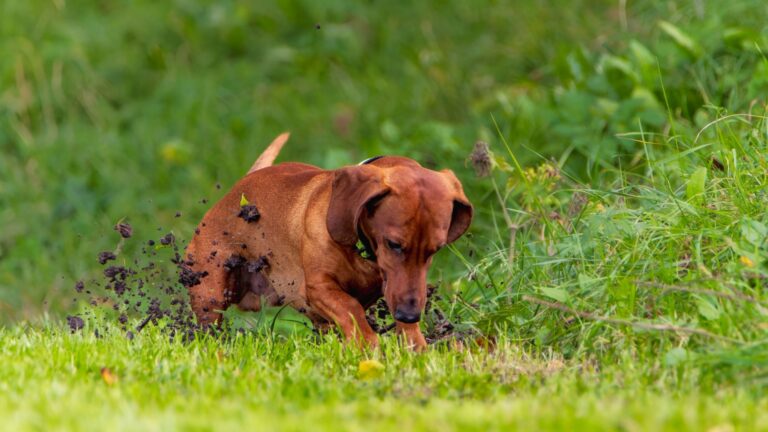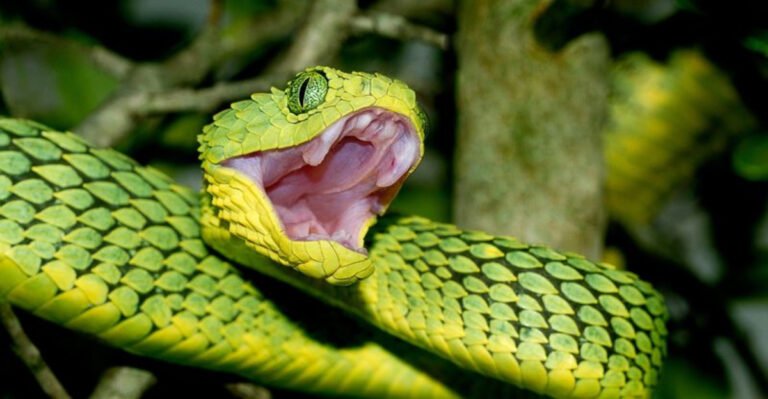13 Ways White-Tailed Deer Adapt To Urban Sprawl
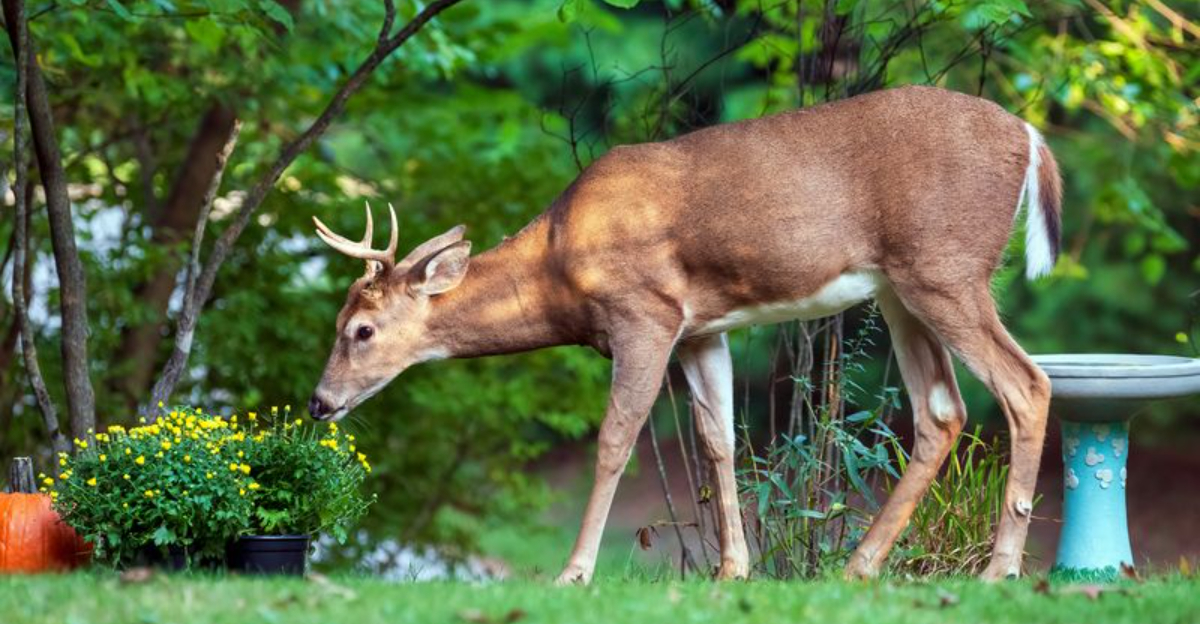
White-tailed deer are remarkably adaptable creatures that have found ways to thrive alongside human development.
As cities expand and forests shrink, these graceful animals adjust their behaviors and habits to navigate our concrete jungles.
The story of deer in urban areas showcases nature’s resilience in the face of habitat loss and human encroachment.
1. Midnight Munching

Deer have shifted their feeding schedules to avoid human activity. Instead of browsing during dawn and dusk as they would in forests, urban deer often wait until the dead of night when streets are quiet and yards are empty.
This nocturnal adaptation minimizes dangerous encounters with cars and curious humans. Researchers tracking urban deer populations have documented this significant behavioral change using motion-activated cameras throughout suburban neighborhoods.
Some deer have become so comfortable with their nighttime routines that they barely react to passing cars, treating streets like forest paths they must cross to reach the next food source.
2. Backyard Buffets
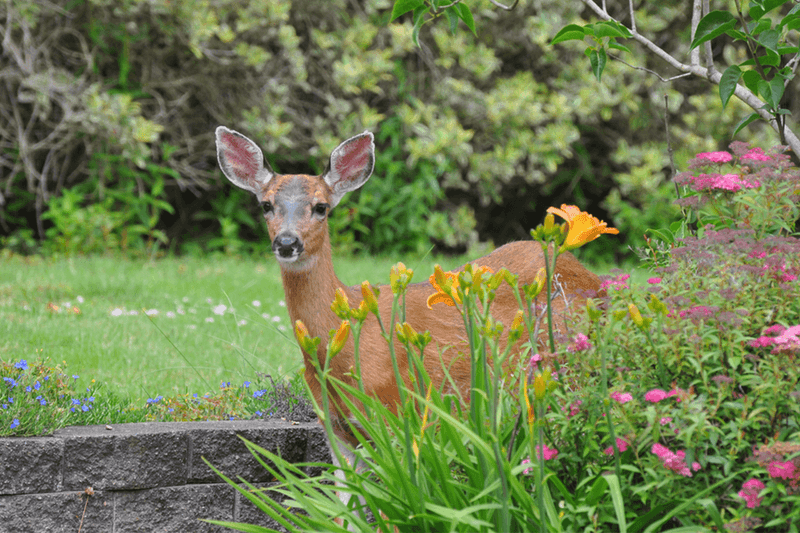
Garden plants offer deer an unexpected food paradise. Hostas, tulips, and vegetable gardens become irresistible feasts that provide more concentrated nutrition than scattered woodland plants. Many homeowners unknowingly create perfect deer habitats with their landscaping choices.
Unlike wild food sources that change seasonally, garden plants are often available year-round and carefully tended by humans. This reliable food source helps deer maintain healthier weights and better reproductive rates in suburban areas compared to their forest-dwelling relatives.
Female deer with fawns particularly benefit from these easy meals, allowing them to spend less energy foraging and more time watching for predators.
3. Small Territory Mastery

Forest deer typically roam several square miles, but urban deer have adapted to much smaller territories – sometimes just a few connected backyards. They create mental maps of safe passages, hiding spots, and food sources within these compressed spaces.
A study in Illinois found urban deer territories averaging just 1/3 the size of their rural counterparts. This adaptation allows them to maximize limited resources while minimizing dangerous crossings through human-dominated spaces.
These smaller territories also lead to more frequent interactions between deer, creating unique social dynamics not seen in wilderness populations. Deer become familiar with specific houses, yards, and even the routines of neighborhood dogs.
4. Traffic Savvy

Urban deer develop remarkable traffic awareness that would astound their forest ancestors. They learn to judge vehicle speeds and recognize traffic patterns, often waiting for gaps between cars before crossing busy roads.
Young deer born in urban environments inherit this knowledge from their mothers, who teach them safe crossing points and times. Some populations even use rush hour patterns to their advantage, moving through neighborhoods during predictable lulls in traffic.
Researchers have observed deer using pedestrian crosswalks in some communities – not because they understand the markings, but because they’ve learned these locations offer better visibility and driver awareness.
5. Park Oasis Living
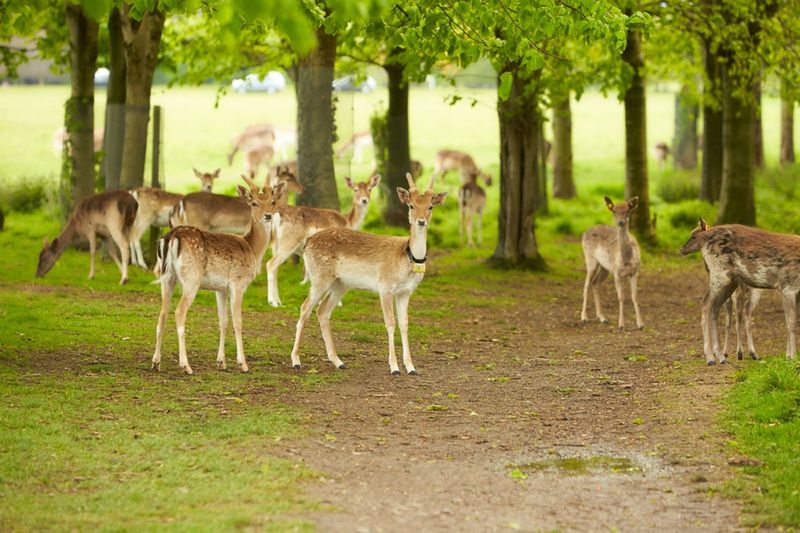
Urban parks have become crucial deer sanctuaries amid concrete sprawl. These green spaces provide core habitat needs – food, cover, and relative safety – in an otherwise challenging landscape. Even modest parks of 10-15 acres can support small deer groups.
Many city parks inadvertently create perfect deer habitat with their mix of open areas, wooded sections, and ornamental plantings. The absence of hunting in these zones also creates safe havens where deer can raise young without their natural predators.
Morning joggers often spot deer retreating from lawns into park woodlands as the city awakens – a daily rhythm showing how deer use these spaces as daytime refuges.
6. Human Noise Tolerance

Wild deer flee at the slightest unusual sound, but urban deer have developed remarkable tolerance for human noise. Lawn mowers, car doors, barking dogs, and children playing no longer trigger their flight response as strongly.
This adaptation happens gradually as deer generations are born into increasingly developed areas. Each generation becomes slightly more habituated to the soundscape of human life.
Researchers measuring stress hormones in urban deer have found they maintain lower baseline stress levels during typical neighborhood noise compared to rural deer exposed to the same sounds. This adaptation allows them to conserve energy rather than constantly fleeing from non-threatening stimuli.
7. Fence Navigation Experts
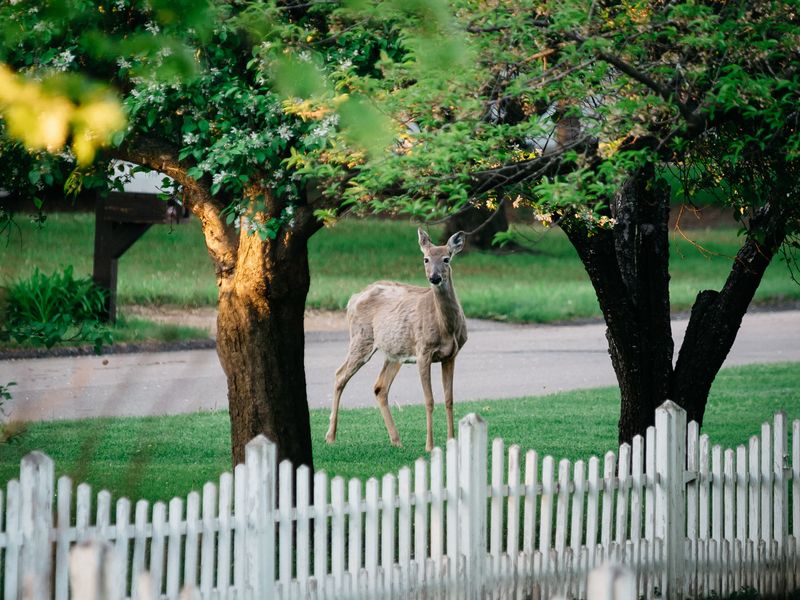
Suburban fences present obstacles that deer have learned to overcome with impressive agility. White-tailed deer can jump obstacles up to eight feet high when necessary, but they prefer finding gaps or weak points that require less energy.
Neighborhood deer create regular pathways through fence systems, often using the same crossing points daily. They teach these routes to their offspring, creating generational knowledge of neighborhood passages.
Some deer have even learned to duck under fences or squeeze through narrow gaps rather than jumping – a behavior rarely seen in their forest counterparts. This adaptive problem-solving shows how quickly deer can modify their instinctive behaviors to navigate human-created obstacles.
8. Street-Smart Fawning
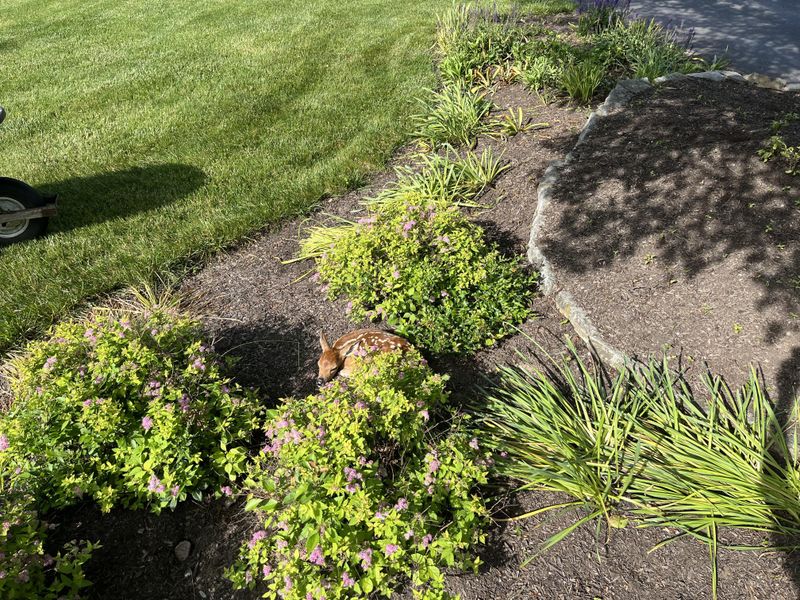
Urban deer mothers have adapted their fawning behaviors to suburban realities. Instead of forest undergrowth, they now hide newborns in tall ornamental grasses, under backyard decks, or in overgrown garden corners – places where predators and humans rarely venture.
These creative hiding spots provide surprisingly effective protection. Mothers have also adjusted their visiting patterns, sometimes checking on hidden fawns less frequently in areas with high human activity to avoid drawing attention to their young.
Neighborhood fawns learn urban survival skills earlier than their rural cousins, including traffic awareness and human avoidance. This accelerated learning is crucial for survival in environments where dangers differ significantly from natural forests.
9. Winter Weather Advantages

Urban heat islands – areas where pavement and buildings retain warmth – give city deer a winter survival edge. Temperatures in developed areas can be 5-10 degrees warmer than surrounding countryside, reducing the energy deer need for staying warm during harsh weather.
Snow also melts faster in these areas, making winter foraging easier. Urban deer can access grass and low vegetation when their rural counterparts must dig through deep snow or rely solely on woody browse.
City structures like bridges, culverts, and even abandoned sheds provide windbreaks and shelter during storms. These advantages translate to higher winter survival rates and better spring health for urban deer populations.
10. Dog Behavior Expertise
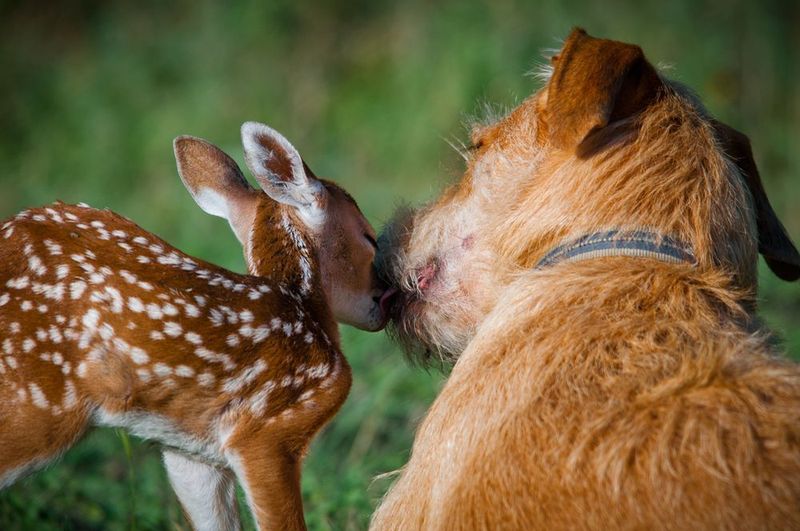
Urban deer have become surprisingly sophisticated in assessing dog threats. They’ve learned to distinguish between fenced dogs, leashed dogs, and truly dangerous free-roaming dogs – responding appropriately to each situation.
Many neighborhood deer recognize that barking dogs behind fences pose no real threat, sometimes grazing calmly just feet away from frantically barking pets. They’ve learned to judge which yards are safe to enter based on dog presence and containment.
This nuanced understanding represents a significant cognitive adaptation. Rural deer typically flee from any dog scent or sound, but urban deer conserve energy by evaluating actual threat levels before deciding whether to flee or continue feeding.
11. Rain Gutter Drinking

Finding clean water can challenge urban wildlife, but deer have discovered that rain gutters and downspouts create reliable drinking spots. After rainstorms, these human structures channel and collect water in predictable locations that deer can easily access.
Birdbaths, decorative ponds, and sprinkler puddles also become important water sources. Urban deer learn the watering schedules of automatic sprinkler systems, sometimes appearing just as they activate.
This adaptation shows impressive observational learning and problem-solving. Deer have connected human structures with essential resources, demonstrating how quickly they can incorporate artificial elements into their survival strategies when natural water sources like streams and ponds become scarce.
12. Seasonal Decoration Curiosity

Deer have developed fascinating responses to seasonal human decorations. Halloween pumpkins become unexpected autumn treats, while Christmas light displays initially cause wariness but soon become accepted parts of their environment.
Some deer show remarkable curiosity toward new yard decorations, cautiously investigating them during night hours. Motion-activated holiday decorations have created unique learning opportunities as deer discover which frightening decorations are actually harmless.
This adaptive curiosity helps urban deer quickly determine which new human additions to their environment represent potential food, danger, or simply irrelevant changes. Their ability to rapidly assess novel objects contributes significantly to their suburban success.
13. Predator Replacement Awareness
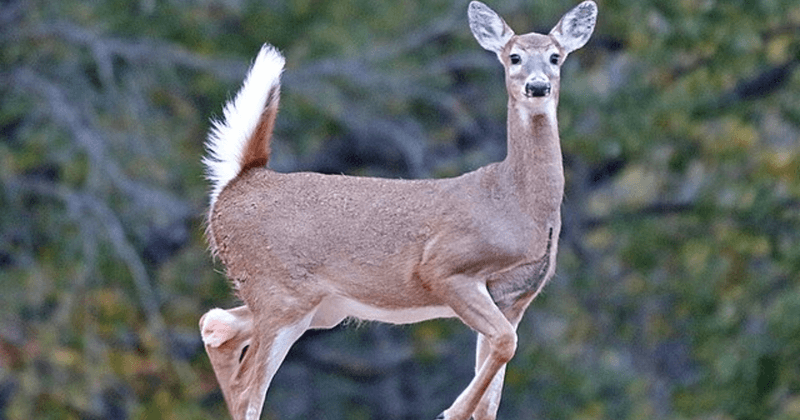
In urban environments where natural predators like wolves and coyotes are rare, deer have learned to treat certain human activities as predator equivalents. Unleashed dogs, maintenance workers in parks, and joggers can trigger similar vigilance responses as would predators in natural settings.
This transferred wariness helps deer maintain necessary caution despite living in environments with fewer traditional threats. They’ve learned that garbage collection days mean truck noise and human activity, often adjusting their movement patterns accordingly.
Some urban deer populations show heightened awareness during hunting seasons in nearby rural areas, suggesting they sense the increased human activity even when it doesn’t directly enter their territories.

